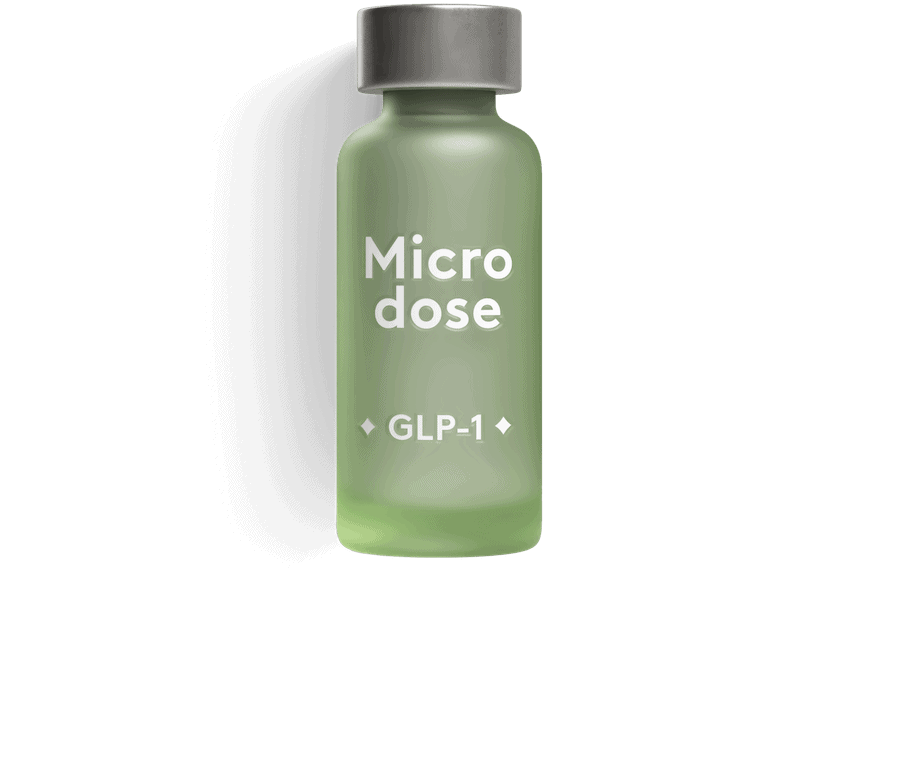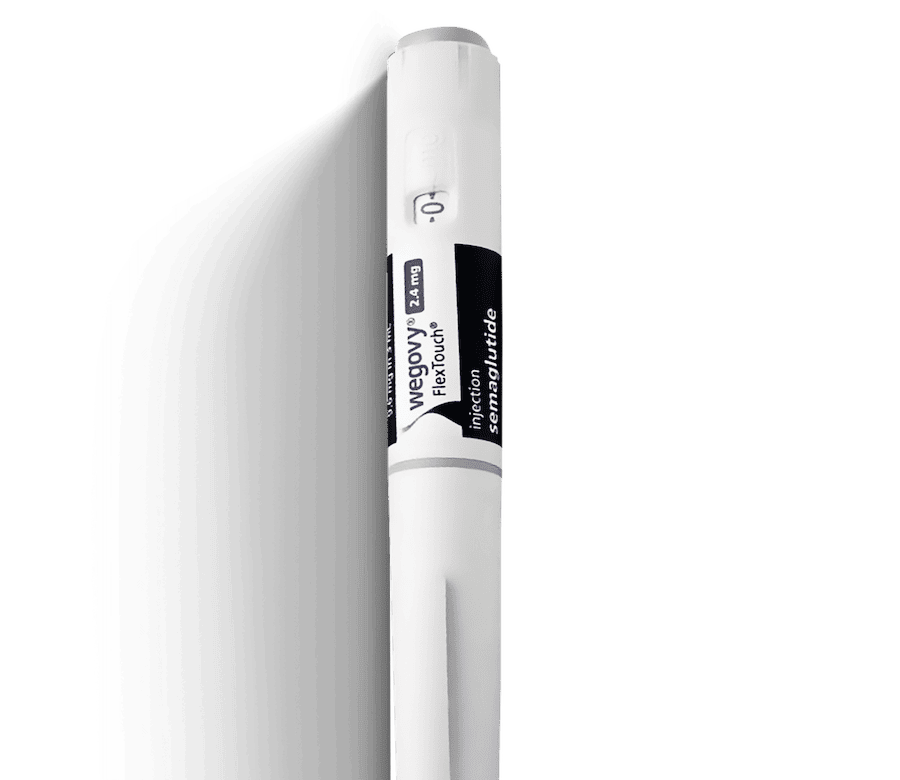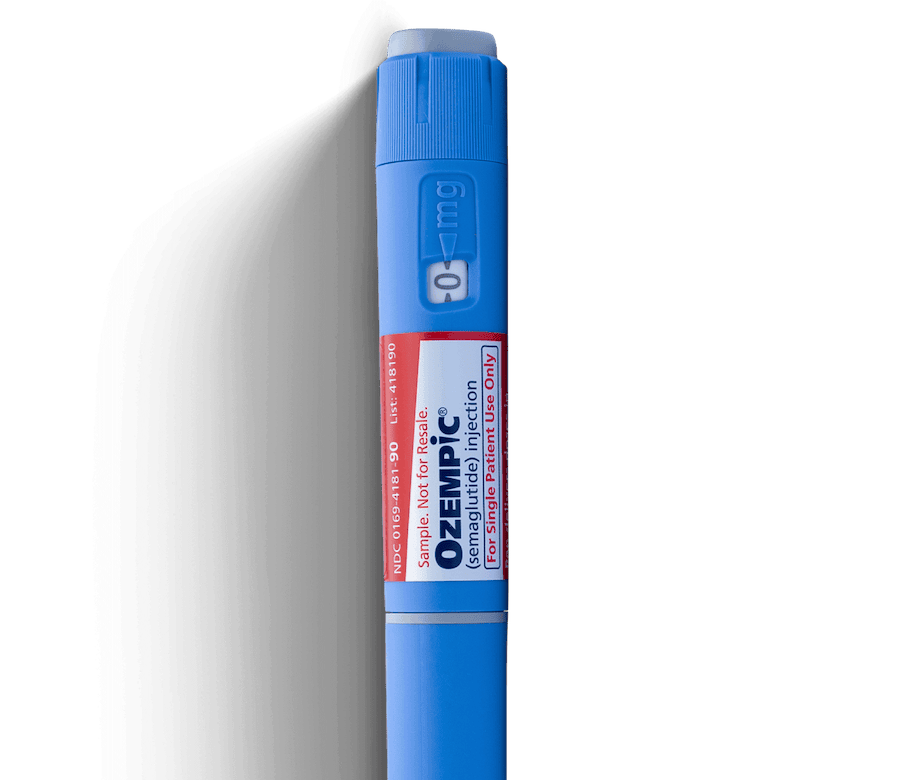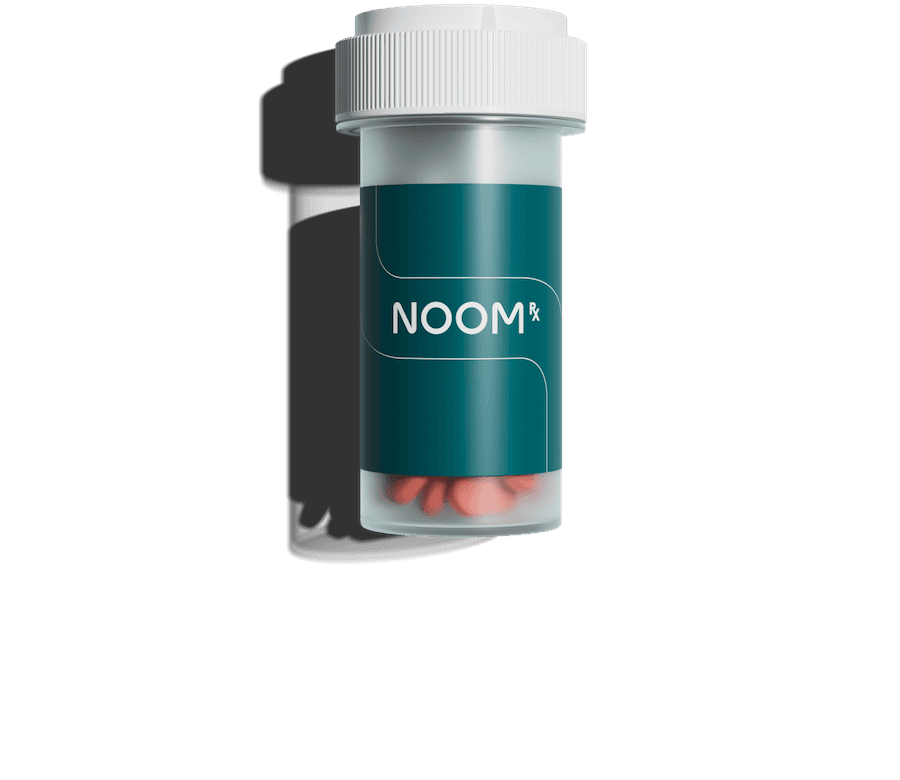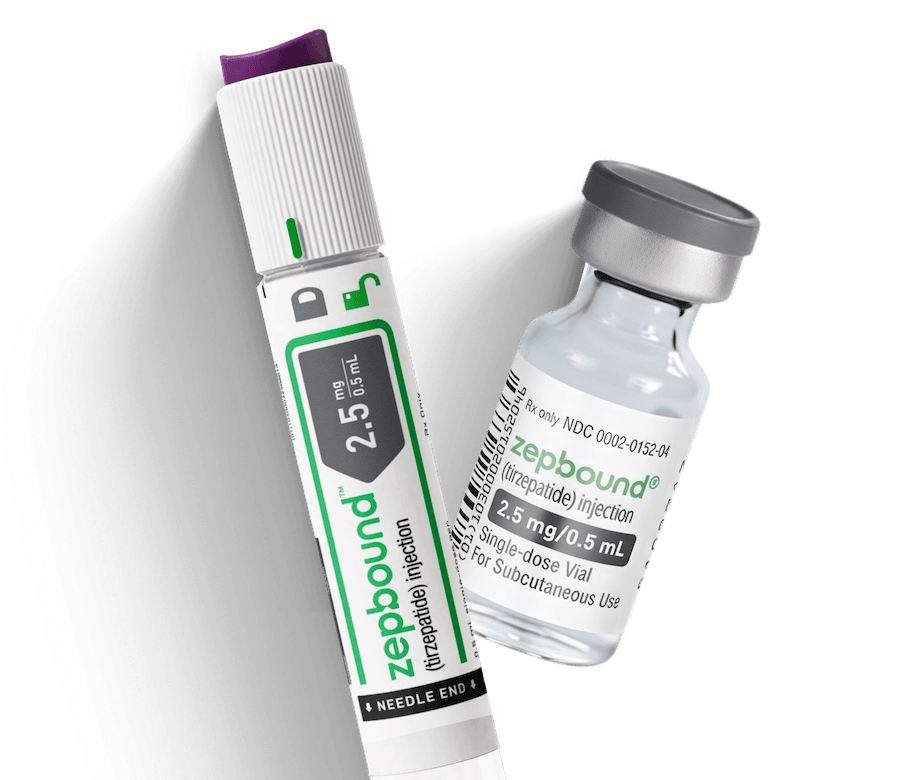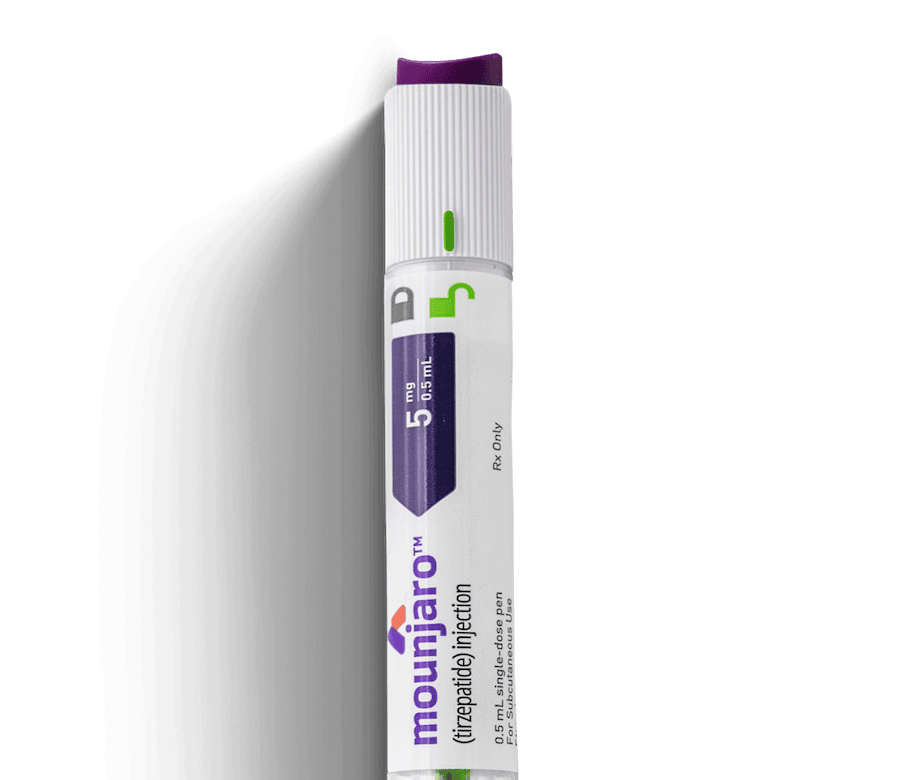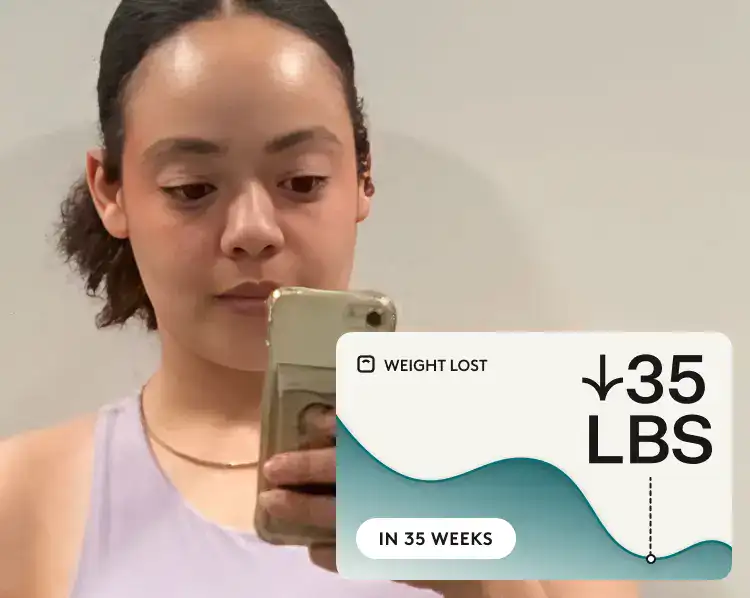What you’ll learn:
- Phentermine is a long-standing prescription weight-loss medication available in low-cost generics and in brand versions. It’s also part of the combo medication Qsymia.
- Typical monthly prices for generic phentermine are under $50, with savings programs and coupons helping lower out-of-pocket costs.
- Insurance coverage for phentermine varies and is often limited, so comparing pharmacy prices and checking manufacturer discounts is key to keeping costs manageable.
Interest in medical support for weight loss is now higher than ever, driven in part by the widespread use of GLP-1 medications. While these newer treatments have transformed the conversation, other proven options remain part of the picture.
Phentermine has a long history as a prescription weight loss aid, first approved by the FDA in 1959, well before the rise of GLP-1 medications like Wegovy® and Zepbound®. Today, it remains widely used, with about 740,000 prescriptions filled each month in the U.S. Designed to help curb appetite, it’s still a common short-term treatment, approved for up to 3 months, but it can be prescribed for longer use off-label. It can also be found combined with topiramate in Qsymia®, a weight loss medication FDA-approved for longer-term use.
When it comes to cost, phentermine can be more budget-friendly than many newer medications. But what you’ll actually pay depends on factors like dose, where you fill your prescription, and whether your insurance covers weight loss drugs—many plans don’t.
Let’s go through the typical costs for phentermine, with and without insurance, and share practical tips to help you plan for your prescription. Plus, we’ll touch on when Qsymia® might be a better choice for you.
What is phentermine?
Phentermine is a prescription stimulant that can help people lose weight. It’s typically prescribed for short-term use along with balanced eating and regular activity.
Phentermine works by stimulating the central nervous system to help curb appetite. You take it once a day by mouth, either before breakfast or a couple of hours afterward, to avoid sleep problems or insomnia. A lower-dose option like Lomaira™ can be taken up to three times a day before meals if smaller, more frequent doses are a better fit. Qsymia® is a medication that combines phentermine with another medication (topiramate) for longer-term use.
Because generics are widely available, phentermine can be more budget-friendly than many newer prescription weight-loss treatments like GLP-1 medications.
How much weight can I lose with phentermine?
Paired with balanced eating and regular activity, studies show that people lose an average of 5% of their starting weight over three months taking phentermine. Some providers may extend treatment beyond 12 weeks, but this is considered off-label and requires close medical supervision.
If you need a different approach or longer-term support, here are two related options:
- Lomaira™: Lomaira™ is an 8 mg low-dose form of phentermine that can be taken up to three times a day before meals. In clinical research, people lost about 5% of their starting weight on average, a result comparable to standard phentermine dosing.
- Qsymia®: Qsymia® is a combination drug that pairs phentermine with topiramate and is FDA-approved for long-term weight management. In a year-long clinical trial, people taking the highest approved dose lost an average of around 10% of their starting weight, making it a stronger option for those who need extended treatment.
Does insurance cover phentermine?
Insurance coverage for phentermine varies widely. Some commercial plans may include it, but coverage isn’t guaranteed and can differ based on your provider and the specifics of your plan. The only way to know for sure is to check directly with your insurance company or pharmacy.
If you have Medicare or Medicaid, coverage for phentermine is unlikely. Most Medicare Part D plans don’t pay for weight-loss prescriptions, and most Medicaid programs have similar restrictions, which means you’d likely pay the full cost out of pocket.
The good news is that phentermine is widely available as a low-cost generic.
If you need a smaller, more flexible dose, you might be prescribed Lomaira™.
For people who need longer-term treatment, some providers recommend Qsymia®, a combination of phentermine and topiramate designed for extended use. Because insurance policies and formularies can change, it’s best to confirm your current coverage and any potential out-of-pocket costs with your provider before filling a prescription.
Rx weight loss, the right way, with Noom
Get access to prescription weight loss medication with Noom.How much does phentermine cost without insurance?
Phentermine is generally considered a budget-friendly prescription compared to many newer weight-loss drugs. The typical monthly prices are:
- Generic phentermine (15 mg, 30 mg, or 37.5 mg tablets/capsules): $37–$41
- Lomaira™ (8 mg tablets): about $28
If your prescription is for Qsymia®, a phentermine and topiramate combo drug, the average monthly prices are:
- Qsymia® (phentermine/topiramate ER): around $150
- Generic Qsymia® (phentermine/topiramate ER): $60–$200
Understanding how much phentermine costs without insurance can help you budget and plan ahead. Prices can vary quite a bit depending on where you shop and what discounts you use.
What factors affect the cost of phentermine?
Your monthly cost for phentermine can vary, and several key factors usually come into play:
- Insurance coverage: Whether your health plan includes phentermine and at what tier will have the biggest impact on out-of-pocket cost. Coverage varies widely, so it’s worth checking with your insurer or pharmacy before you fill a prescription.
- Pharmacy and location: Prices can differ between retail chains, local pharmacies, and mail-order services. Your location can also affect pricing due to regional pharmacy contracts or shipping fees.
- Manufacturer discounts and savings programs: Coupons or savings cards for brand-name products may lower costs. Pharmacies and third-party discount services can also help reduce retail prices.
- Generic vs. brand-name options: Most phentermine tablets and capsules are sold as generics, which generally keeps them inexpensive. The combo drug Qsymia®—which pairs phentermine and topiramate—also comes in a lower-cost generic version.
How to get a phentermine prescription for weight loss
To get a prescription for phentermine you’ll need an in-person visit with a licensed healthcare provider to get a prescription. Phentermine and phentermine-containing products like Qsymia® fall under Schedule IV controlled substances, which come with strict prescribing rules. The Ryan Haight Act requires at least one in-person medical evaluation before a prescription is issued to make sure your treatment is safe and medically necessary. Here’s what that process usually involves:
- Check if you qualify: Phentermine is generally prescribed to people with a BMI of 30 or higher, or 27 and higher with a weight-related condition like high blood pressure or high cholesterol.
- Connect with a healthcare provider: Doctors, nurse practitioners, and physician assistants can prescribe phentermine. They’ll review your health history, medications, and weight-loss goals, and they’ll let you know if your insurance requires any additional paperwork.
- Plan for treatment length: Most people use phentermine for up to 12 weeks. If longer-term support is needed, some providers may continue it off-label with close monitoring or recommend Qsymia®, which is approved for extended use.
Tips to reduce phentermine costs without insurance
Paying for phentermine out of pocket doesn’t have to mean paying full retail price. Try checking pharmacy prices before you fill your prescription. GoodRx can help you spot lower cash prices and print or save coupons to show at the counter. Prices can vary more than you’d think between big-box stores, warehouse clubs, and local pharmacies, so it pays to shop around.
Below is a quick look at common phentermine options and estimated monthly costs if you’re paying cash.
Warehouse clubs and big supermarkets
Large retailers often offer lower cash prices on phentermine, especially if you use their membership or in-store discount programs. Here’s a look at typical retail prices for phentermine products across these larger retailers:
| Retailer | Generic phentermine | Lomaira™ | Qsymia® | Generic Qsymia® |
|---|---|---|---|---|
| Costco | Tablets (37.5 mg): $40 Capsules (15–37.5 mg): $25 | $140 | $277 | $250 |
| Walmart | Tablets: $31 Capsules: $38 | $25 | $271 | $256 |
| Target | Tablets: $40 Capsules: $43 | $31 | $267 | $228 |
Local pharmacies and discount programs
Pharmacy chains can also offer competitive prices for phentermine, and many accept coupons or have their own discount plans. Below is a snapshot of typical retail prices at major pharmacy chains:
| Retailer | Generic phentermine | Lomaira™ | Qsymia® | Generic Qsymia® |
| CVS | Tablets: $40 Capsules: $43 | $31 | $268 | $228 |
| Walgreens | Tablets: $50 Capsules: $47 | $18 | $284 | $256 |
| Rite Aid | Tablets: $45 Capsules: $47 | $37 | $277 | $251 |
Disclaimer: Prices may change and are accurate as of the time of publication. They may vary based on your zip code.
Can you get phentermine for free with insurance?
In most cases, the answer is no. While some commercial health plans may reduce your copay, full coverage for phentermine is uncommon. That means you’ll usually have some out-of-pocket cost.
That said, you can use manufacturer savings programs for some phentermine brands to cut costs if you’re paying cash or your insurance coverage is limited.
Lomaira™
Lomaira™ offers a lower-cost program that caps its price at roughly 50 cents per tablet for those who qualify. The program requires a minimum 30-tablet prescription, is accepted at most U.S. pharmacies, and can even be used if you have Medicare Part D, as long as you pay cash and no claim is submitted.
Qsymia®
Qsymia®, the combo drug for phentermine and topiramate, provides a savings card that can lower your monthly cost by about $70 to $75 if your commercial insurance doesn’t cover the medication.
Qsymia® also offers Qsymia® Engage, a direct home-delivery program with a monthly cost of around $98.
Phentermine: Side effects and warnings
Phentermine works as a stimulant that boosts norepinephrine in the brain to help curb appetite. Because of its stimulant effects, taking it beyond the usual 12-week period may raise the chances of side effects such as elevated blood pressure, heart rhythm changes, or dependence.
The limit to short-term use also goes back to its original approval in 1959, when limited studies were available. While newer research shows some people can use it safely for longer under close supervision, extended use is considered off-label and must be guided by a healthcare provider.
Phentermine is generally well-tolerated, but like any prescription medication, it can cause side effects. Many are mild and temporary, especially during the first days or weeks, while others are less common and require quick medical attention.
Common side effects
The most frequently reported issues for phentermine include:
- Dry mouth
- An odd or metallic taste
- Constipation or diarrhea
- Nausea or vomiting
- Difficulty sleeping
- Restlessness
- Dizziness
- Mild tremors
- Occasional headaches
These are often manageable—your provider can help with tips on timing or adjusting your dose if needed. If a smaller dose would help reduce side effects or fit better with your schedule, they might suggest Lomaira™, an 8 mg form of phentermine designed for more flexible dosing.
Serious side effects and warnings
While uncommon, certain side effects need immediate medical care if they appear.
- Increased blood pressure and heart rate: Contact your doctor if your heartbeat stays fast, you feel palpitations, or your blood pressure remains high.
- Chest pain or shortness of breath: Get emergency help if you experience chest discomfort, breathing problems, or swelling in the legs or ankles.
- Unusual fatigue or reduced exercise tolerance: Let your provider know if you feel unexpectedly tired, get winded easily, or notice a sudden drop in stamina.
- Severe restlessness, agitation, or mood changes: Report any intense nervousness, irritability, or mood swings promptly to your healthcare provider.
- Insomnia that persists: If sleep problems continue or interfere with daily life, ask your doctor about adjusting or discontinuing the dose.
- Allergic reactions: Seek urgent care if you develop a rash, itching, swelling, dizziness, or difficulty breathing.
- Potential for misuse or dependence: If you feel like you need more of the medication, are tempted to exceed your prescribed dose, or find it hard to function without it, contact your provider right away.
Always let your healthcare team know about all medications and supplements you take. If you notice any new or concerning symptoms, check in promptly so they can review your treatment plan and adjust if necessary.
Weight loss medications: Alternatives to phentermine
If phentermine isn’t the best fit for you, there are other prescription weight-loss medications to consider. Some work in a similar appetite-suppressing way, while others, like GLP-1 medications, act on different pathways to help with blood sugar and weight management. These options differ in how they’re taken, how effective they are, and their potential costs.
Here’s a quick look at some of the most common alternatives and how they compare:
| Medication | Brand names and uses | Cost per month (without insurance) | Effectiveness | How it’s taken |
|---|---|---|---|---|
| Semaglutide – GLP-1 receptor agonist | Ozempic®: type 2 diabetes, off-label weight loss Wegovy®: weight loss and heart disease Rybelsus®: type 2 diabetes, off-label weight loss | Ozempic®: $998Learn more Wegovy®: $1,350$499 (NovoCare Pharmacy)Learn more Rybelsus®: $998Learn more | People lost an average of 15% of body weight in 68 weeks with injectable semaglutide. Rybelsus®: People lost about 4% of their body weight. | Ozempic® and Wegovy®: Weekly injection Rybelsus®: Daily pill |
| Tirzepatide – GLP-1/GIP receptor agonist | Mounjaro®: type 2 diabetes, off-label weight loss Zepbound®: weight loss and obstructive sleep apnea (OSA) | Mounjaro®: $1,080Learn more Zepbound®: Pens: $1,087 Vials: $349 (2.5 mg) $499 (5 mg, 7.5 mg, 10 mg, 12.5 mg, 15 mg) Learn more | People lost an average of 21% of body weight at 72 weeks. | Weekly injection |
| Liraglutide – GLP-1 receptor agonist | Victoza®: type 2 diabetes, off-label weight loss Saxenda®: weight loss and heart disease Generic liraglutide: type 2 diabetes, weight loss | Victoza®: $800 to $1,400 Saxenda®: $1,350 Learn more Generic liraglutide: $470 – $700 Learn more. | People lost an average of 5-6% of body weight in one year. | Daily injection |
Other GLP-1 alternatives
Not everyone is a candidate for GLP-1 medications, and some people prefer different approaches for medical weight loss.
Below is a quick comparison of some of the most common non-GLP-1 options, including their typical costs, how they’re taken, and average results to help guide a conversation with your provider.
| Medication | Brand names | Cost per month (without insurance) | Effectiveness | How it’s taken |
|---|---|---|---|---|
| Metformin (off-label weight loss) | Glucophage®, Fortamet®, Glumetza® | Generic: $4–$15 Brand name: $100–$500+ Learn more | People lost an average of about 6% of their body weight over six months while taking metformin. | Pill taken up to two times daily |
| Diethylpropion | Tenuate®, Tenuate Dospan® | $40-$85 | People lost an average of 10% of their body weight in 6 months. | Pill taken one to three times daily |
| Naltrexone and bupropion | Contrave® | $600-$800 CurAccess™: $99 Learn more. | People lost an average of 7 to 8% of their body weight in a year. | Pill taken up to twice daily |
| Orlistat | Xenical®, Alli® (over the counter) | $50-$800 | People in a study lost about 10% of body weight after taking Orlistat for 1 year. | Pill taken three times daily with meals. |
The bottom line: Phentermine can be a low-cost medication for weight loss
Phentermine for weight loss has been around for decades, and it’s still one of the more budget-friendly prescriptions for weight management. For many, it’s helpful and affordable when used for weight loss. You can choose from low-cost generics or brand-name options like Lomaira™ and Qsymia® (a combo drug of phentermine and topiramate), which give you some flexibility depending on your health goals and budget.
The monthly price tag can vary depending on where you fill your prescription, and whether you are able to use coupons, pharmacy discounts, or manufacturer savings programs can help you save some money.
If you’re thinking about exploring medication to help with weight loss, see if you qualify for Noom Med. You’ll be connected with a clinician who can find the right medication for you and prescribe it if needed. You’ll also get personalized coaching that pairs healthy habit-building with medication support for long-lasting results.
Note: Phentermine or phentermine-containing products like Qsymia® can only be prescribed by a physician you can see physically in a clinic and not through telehealth with Noom Med.
Why you can trust us
At Noom, we’re committed to providing health information that’s grounded in reliable science and expert review. Our content is created with the support of qualified professionals and based on well-established research from trusted medical and scientific organizations. Learn more about the experts behind our content on our Health Expert Team page.



